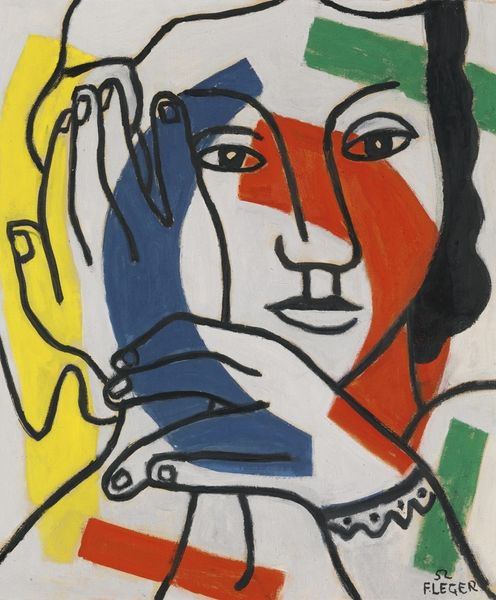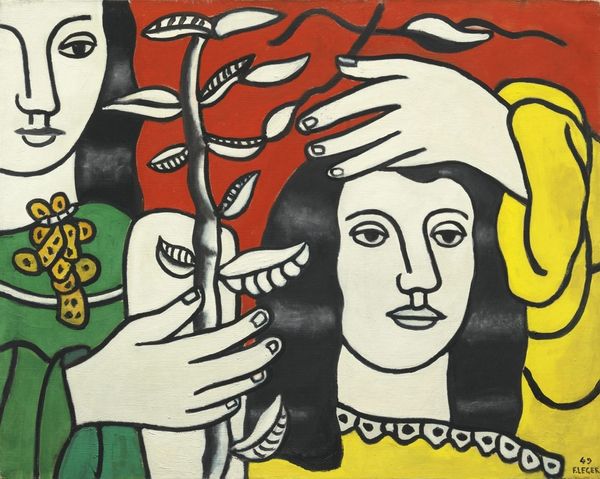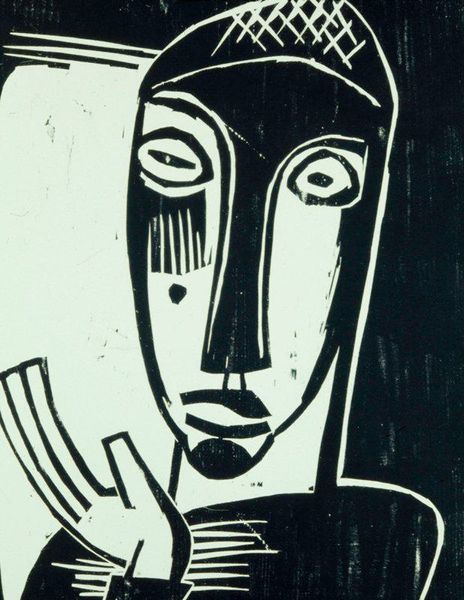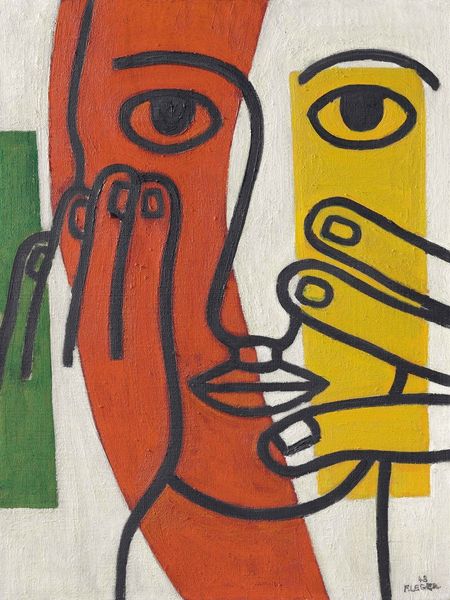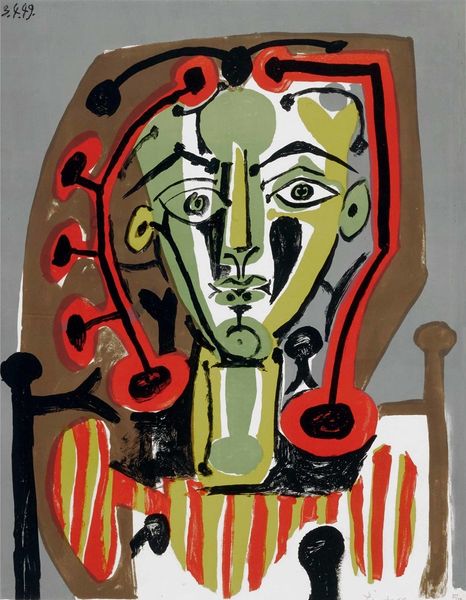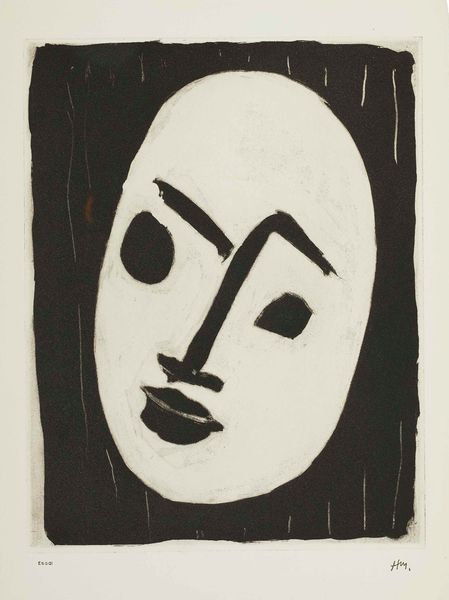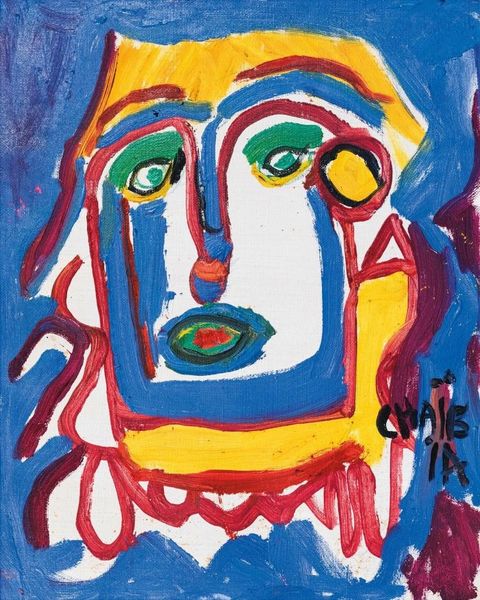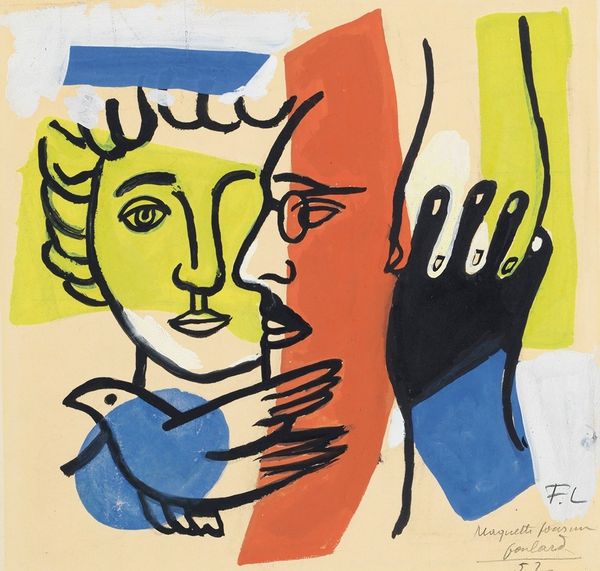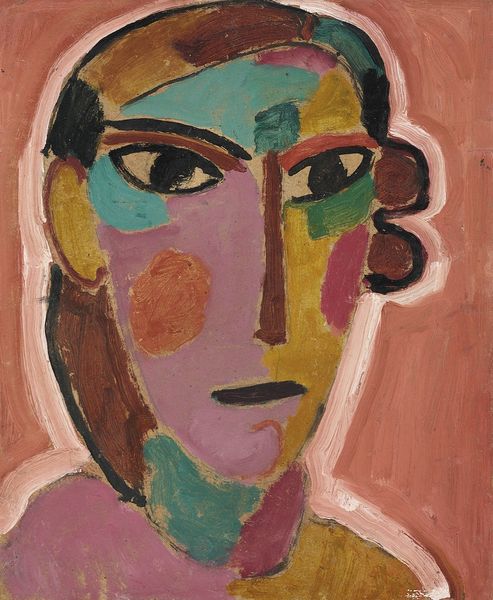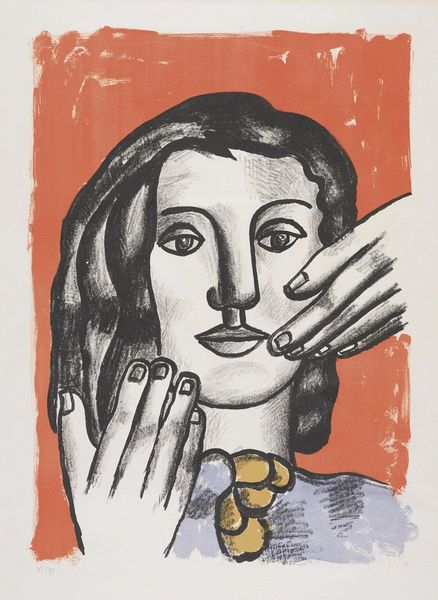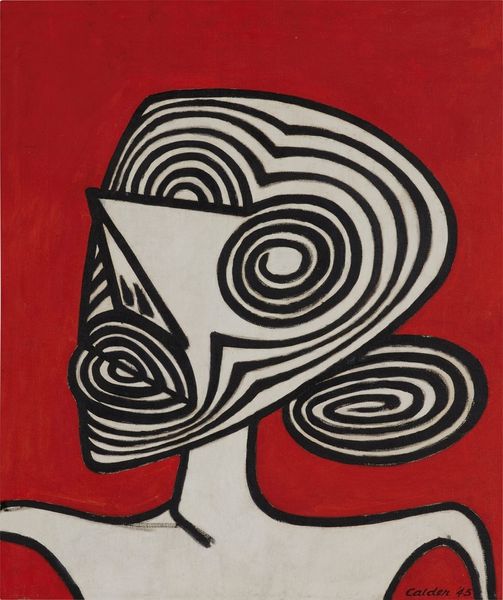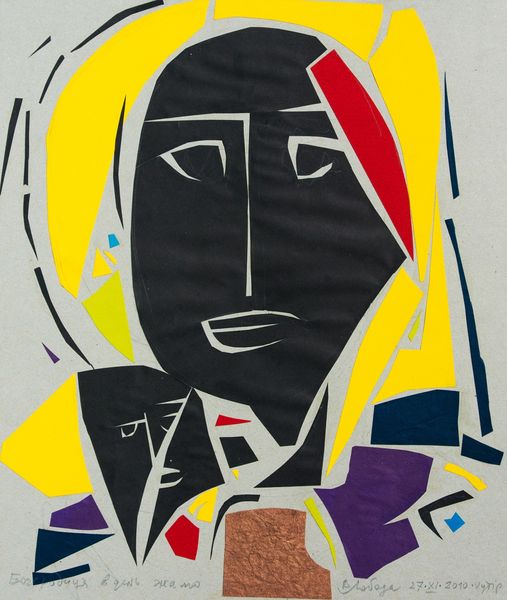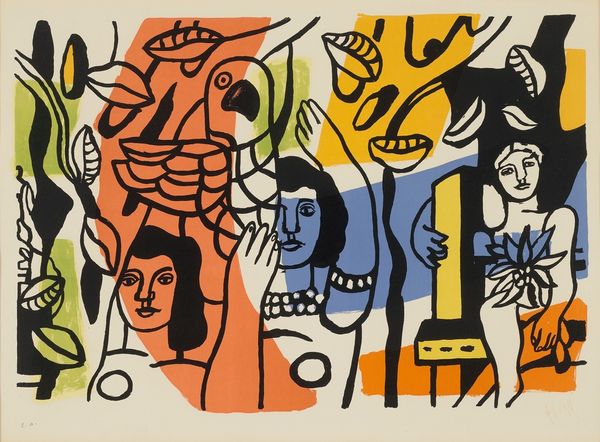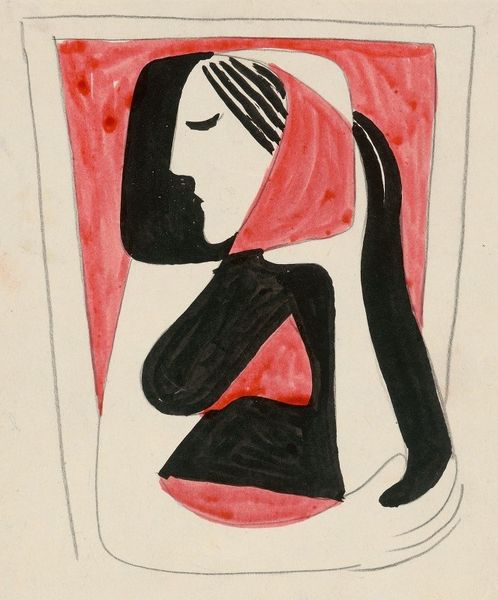
Copyright: Modern Artists: Artvee
Curator: Standing before us is Fernand Léger’s “Figure,” created in 1947. It’s an oil painting reflecting the artist's distinctive approach to portraiture, very much aligned with Modernist explorations. Editor: It’s strikingly graphic, isn’t it? The bold colors—red, yellow, green—are intensely contrasted against the black outlines and blocks of the figure’s hair. It has a flattening effect, collapsing depth. Curator: Exactly. Léger was deeply influenced by the social climate following both World Wars. He aimed for an art that reflected the working class, a "popular" aesthetic, if you will. Note his use of strong lines and simplified forms – almost like machinery parts combined into a human representation. Editor: And how he flattens the pictorial space! There’s barely any modeling of the face. One half is a striking red plane while the other remains white with sharp, black outlines describing the facial features. This technique breaks with classical portraiture, offering a completely new vision of the subject. Curator: That rejection of illusionism was crucial. Léger sought to create universal figures, removing traces of the individual to represent collective humanity. He believed in an art accessible to all, rejecting elitist notions. It reflects post-war society and collective hope, yet can be viewed as caricature. Editor: It's a fascinating intersection of formal severity and what almost feels like playful disruption. The juxtaposition of abstract geometric shapes and figurative elements is key. The eye is forced to reconcile these seemingly disparate parts. Curator: Léger believed this reconciliation would engage the viewer directly in the image's construction, a move that also mirrored the rebuilding occurring across Europe. He sought an art of clarity and order reflecting societal desires, aiming at democratization in all fields, and specifically art and representation. Editor: Reflecting on the painting’s structure—it operates as a study of shape and colour, independent from conventional spatial relationships. Its brilliance lies in its tension, how the painting challenges traditional representational modes to offer a fragmented, but assertive, vision of a figure. Curator: Ultimately, Léger gives us an artistic interpretation born out of historical upheaval and social evolution, rather than just depicting a likeness.
Comments
No comments
Be the first to comment and join the conversation on the ultimate creative platform.
